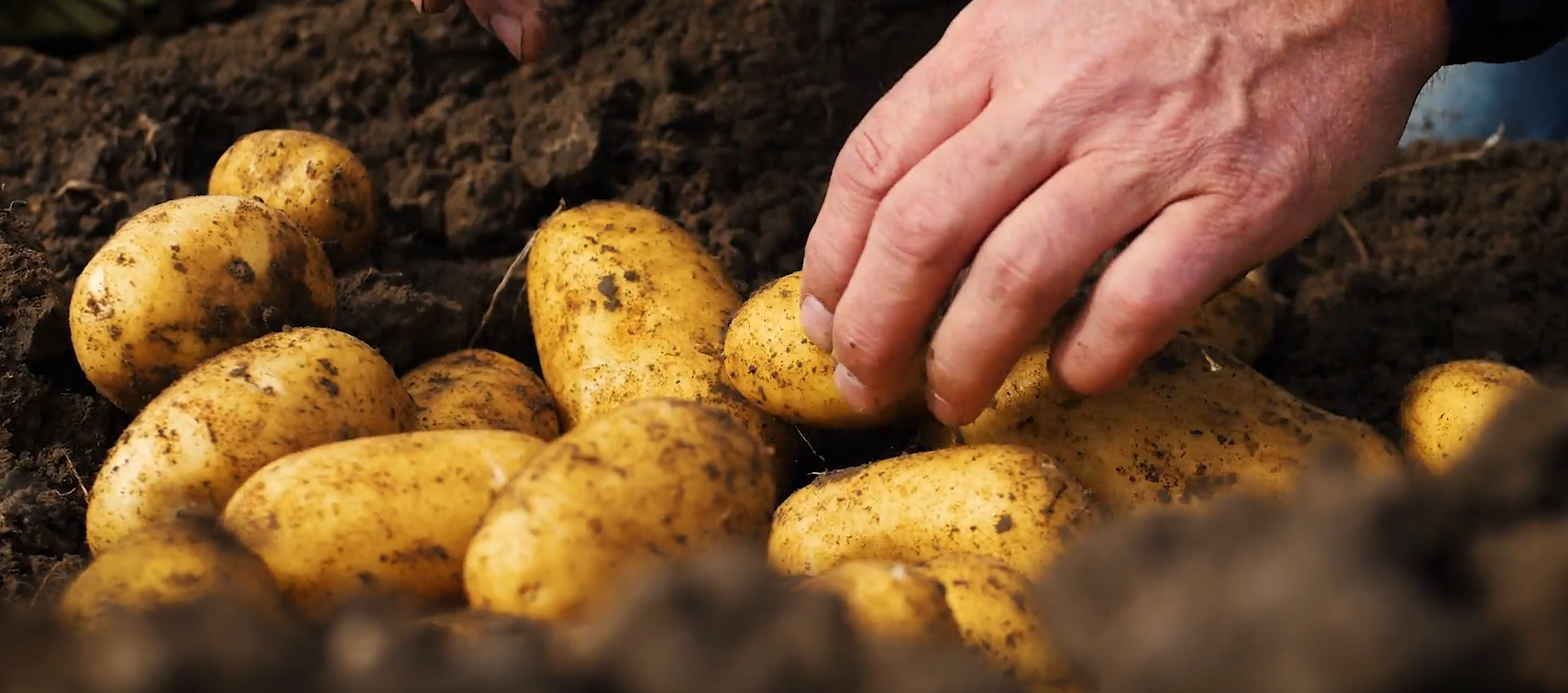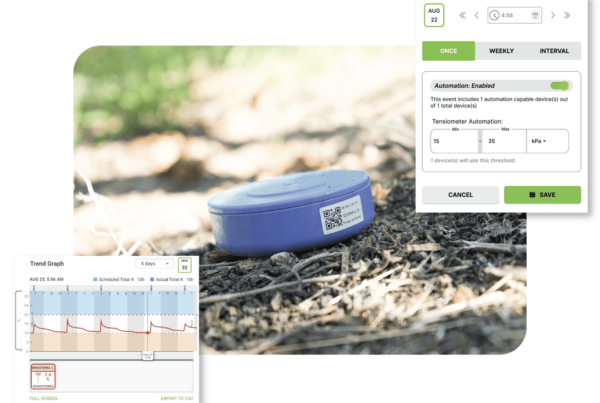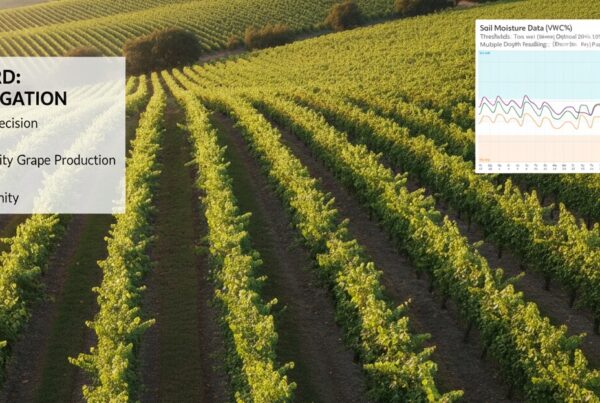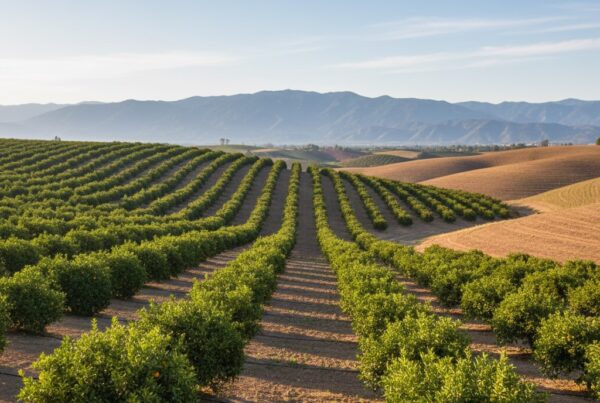The rise of Dutch agriculture in global markets is a true example of how the future of farming could evolve. The adoption of precision agriculture techniques has led the country’s agriculture to another baseline, currently ranked as the second biggest agricultural exporter in the world, just behind the U.S. In a 2017 Nat Geo article, Frank Viviano approaches multiple smart farming techniques, such as drones and soil health management with soil moisture sensors, LED-light crops, and many other tools that served as pillars for this ascension.
Precision irrigation for potatoes
Van den Borne aardappelen is one of the biggest potato growers in the Netherlands. From the top of his perch, Jacob monitors his crop via drones – a driverless tractor in the field and a quadcopter in the air – that provide precise readings of water content, yield growth, soil chemistry, measuring the progress of every plant detailed to the individual potato. Van den Borne’s production standards exemplify the power of precision agriculture: global average yield of potatoes per acre is around nine tons, but for van den Borne production is more than 20 tons.
Since 2000, van den Borne farms reduced water dependency by as much as 90%, while eliminated the use of pesticide chemicals on their greenhouse fields. Their decision of reducing water for irrigation and general wastes such as energy, workload and money counts on precise tools to give more control over potato crops. Van den Borne crops rely on Sensoterra sensors to provide the right soil moisture readings and support smart irrigation decisions to achieve outstanding yield increases.
Sensoterra is a leader in smart farming technology, providing wireless, low-cost, real-time soil moisture sensors to all types of growers and soils. To achieve simple and precise soil health, that fits in your pocket, is one of your missions. The one-minute-installation sensors also offer a fast ROI within one crop cycle. The vast operational area of the sensors, with over 5,000 sensors installed in farms across the globe, is just possible due to the Internet of Things (IoT) technology, connected by LoRaWAN network. Sensors send hourly data using LoRa technology, where farmers gain more control over their fields, becoming less dependent on physical presence and more attentive to trends and variations.
Precision agriculture is bringing the most modern technology, like never seen before in Dutch agriculture. Not one, but a combination of techniques can assess the health of individual plants and determine exactly how much water and nutrients they need to receive.
LED lighting tomatoes growth by Wageningen University
Greenhouses and climate controlled farms enable Dutch agriculture to be a leader in tomato exports as well as potatoes, onions, and vegetables overall. The Netherlands originates more than a third of all global trade in vegetable seeds. Dutch tomato industry, over the last 30 years, has become a world leader in yield-producing more tomatoes per square meter.
Tomatoes cultivation rushes on the use of LED lighting to permit 24-7 cultivation in precisely climate control greenhouses. The responsible for these substantial numbers is centered at Wageningen University & Research (WUR). Ernst van den Ende, WUR’s Plant Sciences director explains how global food production will depend on precise productivity:
“Planet should produce more food in the next four decades than all farmers in history have harvested over the past 8,000 years,” says van den Ende. He continues, “If massive increases in agricultural yield are not achieved, matched by a massive decrease in the use of water and fossil fuels, a billion or more people may face starvation”.
Regarding tomatoes yield, the Netherlands has been “doing more with less”. When utilizing innovations on large-scale, such as hydroponic farming or soil sensors, total water footprint can be massively reduced, like the ones calculated for tomato production (Figure 1).
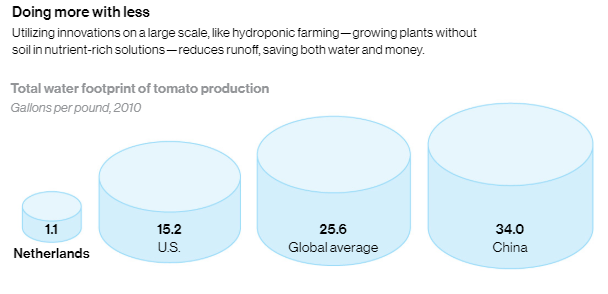
Figure 1: Graph of the Dutch water footprint for tomato production compared to other countries as the U.S., China and global average. The achievement of using less water and growing more is reachable because of several technologic increments on Dutch fields, such as 24/7 LED lighting crops in greenhouses (Retrieved from National Geographic’s article, 2017).
Precision agriculture is largely applied to tomato crops in greenhouses, increased business in the Netherlands. Using the most high-tech methods, Jasper Oussoren, a Dutch tomato grower uses natural gas conversion into electricity to fulfill greenhouse lighting and warmth to boost plant growth. In addition to other crops dominating global markets with “growing more with less”, as seen in Figure 2.
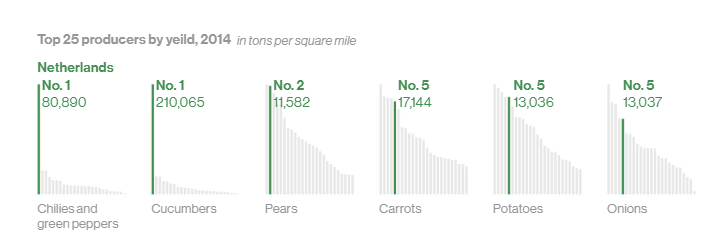
Figure 2: Dutch agri-food production of several vegetables are ranked as one of the highest productions in tons per square mile in the world (National Geographic, 2017).
To conclude, Van den Eden complements with “It is a misconception that sustainable agriculture means minimal human intervention in nature”. The use of technology to increase precision can also detect all kinds of climate-variation interferences in croplands to prevent usual problems, such as food waste, pesticides, and excessive water consumption. As an overall consequence, technology improves sustainable agricultural practices (Retrieved from National Geographic’s article, 2017).
Dutch agriculture & Sensoterra
Sensoterra is a pioneering leader in the field of wireless soil moisture sensors, offering cutting-edge IoT soil moisture sensor solutions for smart agriculture. Our state-of-the-art Sensoterra soil moisture sensors are at the forefront of agriculture IoT, providing unparalleled soil moisture monitoring capabilities.
Our commitment to precision agriculture technology allows farmers to make informed decisions, optimize their irrigation systems, and embrace sustainable farming solutions. With Sensoterra, access to real-time soil moisture data is at your fingertips, enabling precise water management and water resource management for your agricultural operations.
Sensoterra, established in 2015, with its headquarters in Houten, The Netherlands, develops water management solutions for agriculture/horticulture, smart city management, and water governance. Sensoterra has over 12,000 sensors in the ground globally, and generates hundreds of thousands of data points for smart water management, daily.
Contact for more information, pictures and/or interview requests:
Jessica Nuboer
Marketing & Communications
Sensoterra
Email: [email protected]

